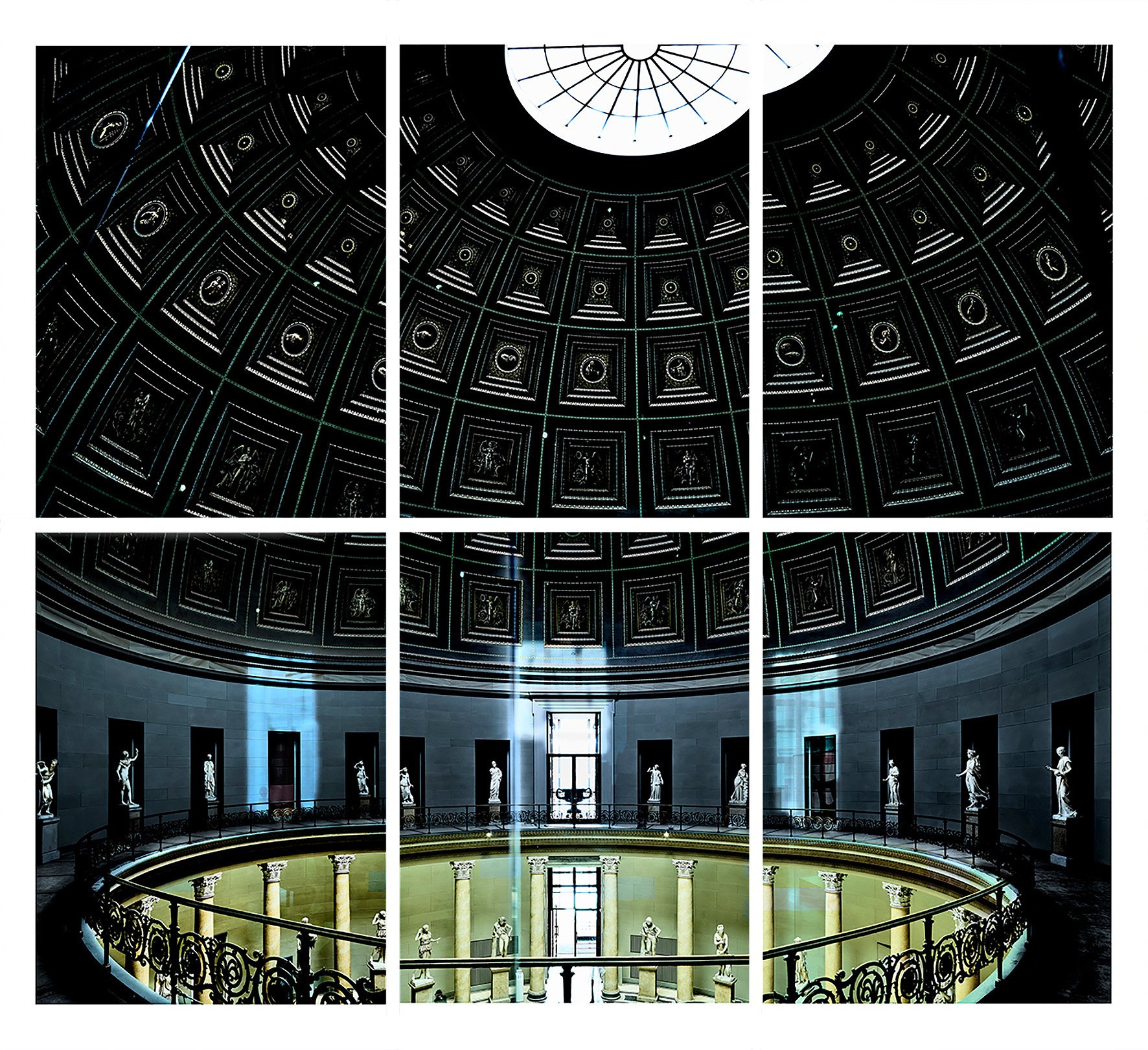Ola Kolehmainen
Mvsevm
4 November – 17 December 2021
In his first solo exhibition in our gallery OLA KOLEHMAINEN (*1964 in Helsinki) presents large-scale format photographs resulting from a project that began in the Swedish National Museum in cooperation with the Finnish National Gallery. Susanna Petterson, director general of the Swedish National Museum, started the exhibition project Inspiration. Iconic Works together with the art historian James Putnam. The project dealt with the founding of the most important European art museums in the 19th century as well as with questions about contemporary taste, the practice and presentation forms of collections in a museum. The exhibition took place in 2020 both in the Swedish National Museum and in the Ateneum Art Museum in Helsinki whereby original works and their processes of creation played a role, but also and above all the interpretations, adaptations and commentaries of the contemporary artists who were invited.
“MVSEVM XIII”, 2020, Archival Inkjet Matt Print on Dibond, Ed. 4 + 2 AP, 193 x 460 cms
MVSEUM
OLA KOLEHMAINEN created his new series of works MVSEVM which can now be seen for the first time in a gallery. The Finnish artist visited several museums in Europe that are comparable with the Ateneum and the Swedish National Museum. In each case he spent a few days there so as to familiarize himself with the atmosphere and the differing light situations during the course of a day. After making many ‘sketch photos’ the actual creative process began: works of art and spaces were chosen and the development technique determined. The artist was principally concerned not with panoramic spaces but with detailed views (MVSEVM XIV, Sir John Soane) and unusual architectural insights (MVSEVM XIII, Victoria & Albert).
So as to liberate the medium of photography from the dogma of documentation OLA KOLEHMAINEN uses the photographic process to adapt the original colours (MVSEVM I, Nefertiti II). He divides the space up by photographing separate architectural parts and joining these together to a great whole (MVSEVM IX, Sir John Soane Staircase; MVSEVM XII, Old Museum). The human eye observes fragmentarily and attains a three-dimensional spatial view only through the performance of its brain, but by overlapping and distortion this can no longer be produced.
“MVSEVM IX (Si John Soane)”, 2020, Archival Inkjet Matt Print, Ed. 4 + 2 AP, 235 x 235 cms
“MVSEVM X (Bacon-Velazquez II)”, 2021, Archival Inkjet Matt Print on Dibond, Ed. 4 + 2 AP, 168 x 133 cms
Caesar, Nefertiti, Pope
Ancient artefacts such as the busts of Julius Caesar or the famous Nefertiti are changed in colour and doubled, giving the impression that they are looking at themselves: narcissism in the best sense (MVSEVM I, Nefertiti III, MVSEVM XI, Green Caesar). The artist’s enthusiasm for the works of Francis Bacon is palpable in MVSEVM X, Bacon-Velazquez II. The illustrated portrait of Pope Innocent X by Diego Velazquez is reminiscent of the famous series of Pope portraits by Francis Bacon from the 1950s: the space is interleaved and brings to mind Bacon’s cage-like creations; the figure of the Pope is distorted by a doubling of the lower body and the hands, the colours are partially inverted.
“Museums function like time machines”
“Museums function like time machines”, says OLA KOLEHMAINEN in an interview he gave prior to the exhibition. “Greek and Roman sculptures, Renaissance masterpieces and their contemporary interpretations come together in this project and revoke the relevance of time.”










